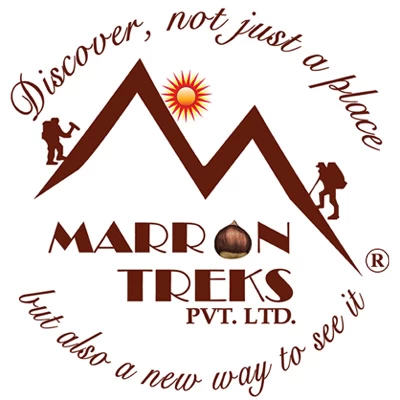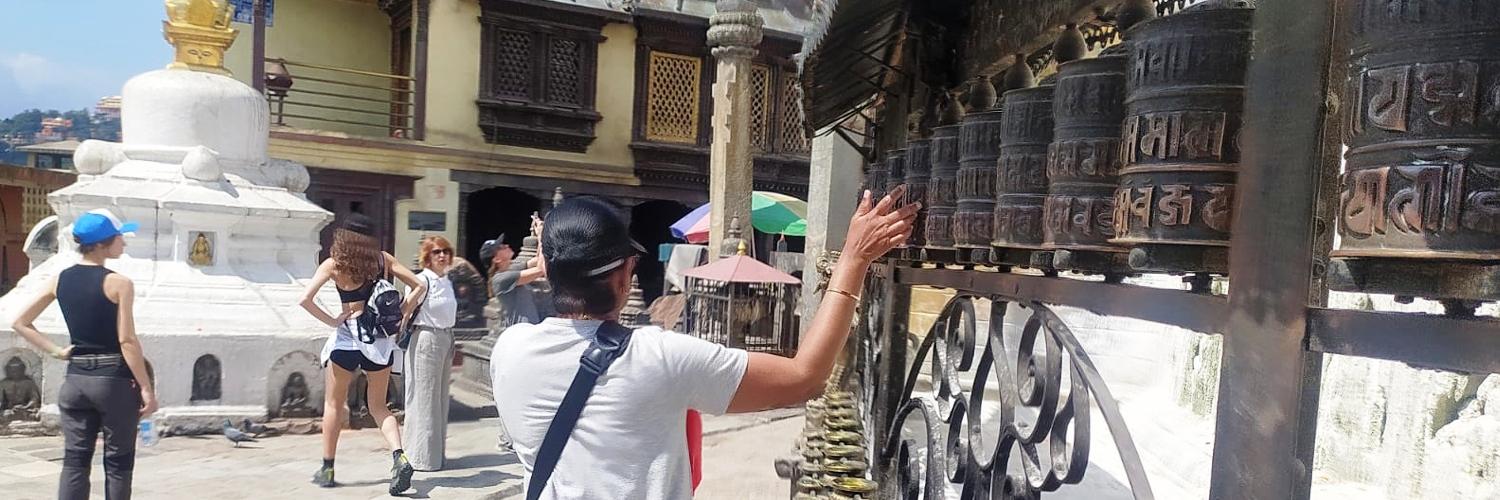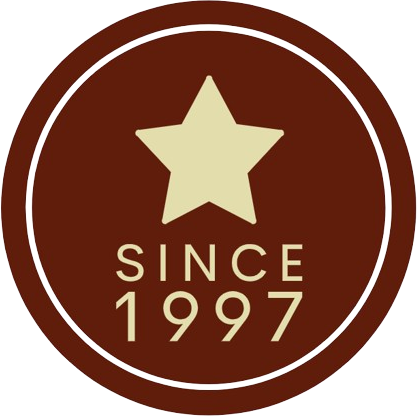- Where is Nepal located?
Nepal is located in South Asia situated between China (to the north) and India (to the east, south, and west).
- What is the capital of Nepal?
The capital of Nepal is Kathmandu, which is also the largest city in the country.
- Can I travel to Nepal right now?
Nepal is, in fact, completely open. There are no limitations for travelers in Nepal. Arriving travelers can also get a visa right away at the airport in Kathmandu.
- Does Nepal need PCR test?
Now, visiting Nepal is hassle-free. No vaccination record or negative PCR test is necessary, but make sure to ask your airlines and transit nations if there are any further requirements. For the most recent information, we advise you to visit the Nepal immigration website.
- How to enter Nepal?
Entering Nepal typically involves arriving in the country through one of its international airports or land border crossings. The most common way to enter Nepal is flying to Tribhuvan International Airport (TIA), Kathmandu. In addition to TIA, there are other international airports in Nepal, including Gautam Buddha International Airport in Lumbini and Pokhara Airport in Pokhara.
You can enter Nepal by land through various border crossings, including those with India in the south and China/Tibet in the north. Some popular land border crossings for tourists include the Kakarbhitta border with India, the Sunauli border with India, and the Rasuwagadhi border with China/Tibet.
- How do I obtain a visa to visit Nepal?
One can obtain a tourist visa upon arrival at the Tribhuvan International Airport in Kathmandu or at various land border crossings. The visa is usually granted for durations ranging from 15 days (USD30) to several months. Nepal also offers e-visa options for certain nationalities.
- Is there e-visa for Nepal?
Nepal had introduced an online visa application system, allowing certain nationalities to apply for a tourist visa online before traveling to Nepal. This was not a traditional "eVisa" in the sense of some other countries, but rather an online application process that facilitated the visa issuance upon arrival. Click Here
- Is it safe to travel in Nepal?
Nepal is generally considered safe for travelers, but it is always recommended to take necessary precautions and stay updated with the current situation before planning a trip.
- Are there any tourist police in Nepal?
Yes, Nepal has a Tourist Police force dedicated to assisting and ensuring the safety of tourists visiting the country. Tourist Police units are typically located in popular tourist areas, such as Kathmandu, Pokhara, Chitwan, and other major tourist destinations. You can reach the tourist police office at Bhrikutimandap, Kathmandu Ph: 9771424701 or Dial just 1144.
- Do you need travel insurance for Nepal?
While travel insurance is not a strict requirement for entering Nepal, it is highly recommended for anyone planning to visit the country. Some reasons to buy travel insurance for Nepal includes Medical Emergencies, Emergency Evacuation, Trip Cancellation or Interruption, Lost or Stolen Belongings, Travel Delays.
- How to get travel insurance for Nepal?
Getting travel insurance for Nepal is a relatively straightforward process that requires researching and comparing Insurance Providers, determining your Coverage Needs, reading the Policy Carefully and purchasing the Insurance.
- How many days should I spend in Nepal?
The ideal duration for your trip to Nepal can vary greatly depending on your interests, the activities you plan to undertake, and the specific places you want to visit. Nepal offers a wide range of experiences, from trekking in the Himalayas to exploring cultural heritage sites and enjoying vibrant cities.
- Is Nepal safe for solo female travelers?
Nepal can be a safe destination for women traveling alone, but like any other country, it's essential to take precautions to ensure your safety and have a positive travel experience. Some tips for women traveling alone in Nepal are researching and planning, dressing modestly, use reputable accommodations, staying connected with your family or friends, connecting with other travelers and basically trusting your instincts.
- What language is spoken in Nepal?
Nepali (also known as Nepalese) is the official language of Nepal and is widely spoken throughout the country. There are also numerous regional languages and dialects.
- What is the currency of Nepal?
The currency used in Nepal is the Nepalese Rupee (NPR)
- Are there ATM facilities in Nepal?
Yes, Nepal has ATM (Automated Teller Machine) facilities, especially in major cities and tourist areas. ATM services are relatively common in urban centers like Kathmandu, Pokhara, and Chitwan, as well as in popular trekking regions such as the Annapurna and Everest areas. However, the availability of ATMs may be more limited in rural and remote areas.
- Is Nepal a popular tourist destination?
Yes, Nepal is a popular tourist destination, especially for those interested in trekking, mountaineering, and experiencing its rich culture and natural beauty.
- What is the religious composition of Nepal?
Nepal is predominantly Hindu, with Hinduism being the major religion practiced by a significant portion of the population. Buddhism is also an important religion in Nepal, and there are other minority religions as well.
- What is the weather like in Nepal?
Nepal has a varied climate due to its geographical diversity. The lowlands experience a subtropical climate, while higher elevations have cooler temperatures. The best time to visit for trekking and outdoor activities is during the spring (March to May) and autumn (September to November) seasons.
- What is the best time to visit Nepal?
The best time to visit Nepal is during the spring (March to May) and autumn (September to November) seasons. These months generally offer pleasant weather and good visibility for outdoor activities.
- What is the highest peak in Nepal and the world?
The highest peak in Nepal and the world is Mount Everest, which is 8,848 meters (29,029 feet) tall.
- What are some must-visit cultural sites in Nepal?
Nepal is rich in cultural heritage, and there are numerous must-visit sites that offer insights into the country's history, religion, and traditions. Some of the top cultural sites in Nepal are Kathmandu Durbar Square, Patan Durbar Square, Bhaktapur Durbar Square, Swayambhunath Stupa (Monkey Temple), Boudhanath Stupa, Pashupatinath Temple, Lumbini (birth birthplace of Lord Buddha) etc.
- Are there any festivals or events that are unique to Nepal?
Yes, Nepal is known for its vibrant and diverse festivals that reflect the country's cultural, religious, and traditional heritage. Some unique festivals and events celebrated in Nepal are Dashain (the biggest and most important festival), Tihar (Festival of Lights), Indra Jatra, Holi (festival of colors), Buddha Jayant etc.
- What is there to buy in Nepal to take back home?
Nepal offers a wide range of unique and culturally rich items that make for excellent souvenirs or gifts to take back home. some popular items to consider buying in Nepal are Handmade Crafts and Artwork, Clothing and Textiles, Jewelry and Accessories, Traditional Handicrafts, Local Tea and Spices, Paper Products, Musical Instruments, Handwoven Rugs and Carpets, Pottery and Ceramics.
- How much to tip in Nepal?
Tipping guides in Nepal is a common practice, and it's a way to show appreciation for their services and hard work. The amount you should tip your guide can vary depending on factors such as the length of your trek, the level of service provided, and your budget.
- May I know the electricity in Nepal?
While some nations, like the United States and Canada, use 110-120 volts/60 Hz electricity, Nepal uses 220-240 volts and 50 Hz. Electric plugs in Nepal have two or three round prongs rather than the flat ones used in the US or other nations.
- What is the dress code in Nepal?
Take a dress that won't offend Nepali people, culture, or ethnic customs. Avoid tight or short clothing and dress nicely.
- Are foods hygienic in Nepal?
The hygiene of food in Nepal can vary depending on where you eat and the type of establishment you visit. In general, Nepal offers a wide range of delicious and diverse food options, but it's essential to exercise caution to ensure that you consume safe and hygienic meals.
- What is illegal work in Nepal?
The killing of cows and other endangered species, the trafficking of their parts, the purchase of marijuana, and other acts are prohibited by national and international legislation. Prostitution is also prohibited in hotels, massage parlors, and beauty salons.
- What kind of meat is available in Nepal?
There are goat, chicken, water buffalo, and imported beef options. In Nepal, it is forbidden to sacrifice the cow because it is holy.
Leading Trekking and Adventure Agency Since 1997
+977 9851049662
| info@marrontreks.com
| 日本語ウェブサイト


